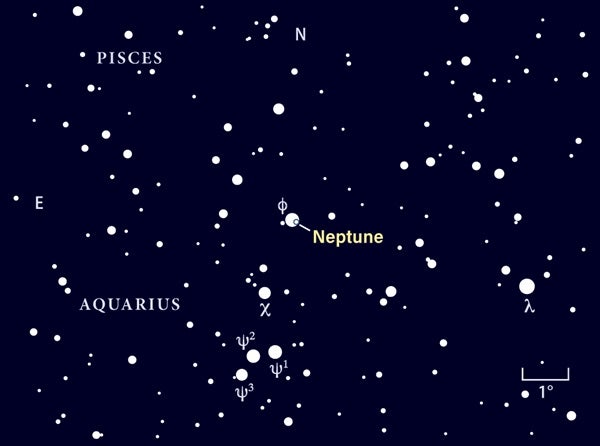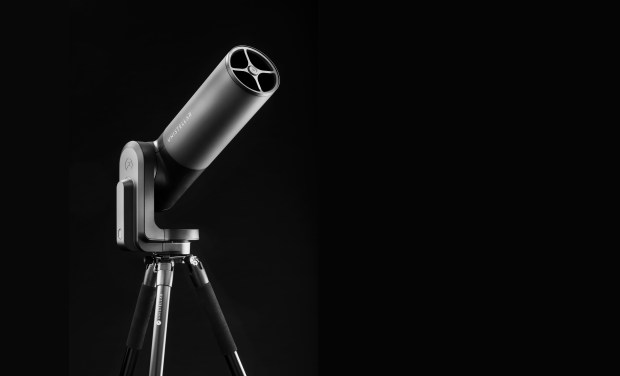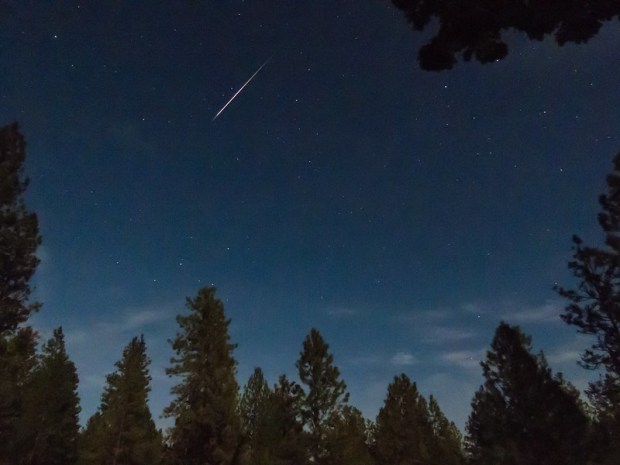Neptune reaches opposition and peak visibility on Monday night (officially at 3 a.m. EDT on the 10th).
Because it lies opposite the Sun in our sky, it rises at sunset and appears highest in the south around 1 a.m. local daylight time.
But you can start searching for it by 10 p.m., when it stands nearly one-third of the way from the southeastern horizon to the zenith.
Neptune glows at magnitude 7.8, bright enough to spot through binoculars if you know where to look.
The trick is to find the 4th-magnitude star Phi (φ) Aquarii, which lies about 15° (two binocular fields) east-southeast of Aquarius’ distinctive Water Jar asterism. At opposition, Neptune appears just 0.1° west of Phi.
When viewed through a telescope, Neptune shows a blue-gray disk measuring 2.4″ across.
For more observing targets, follow The Sky This Week.










